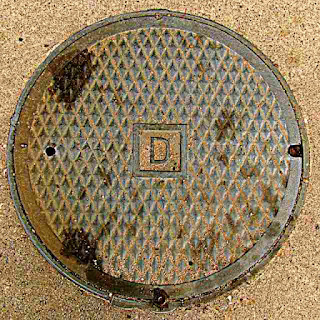- A News Article about Classical Music Offsets
- Musical Compositions Based on Polling Audience Preferences
- A Scholarly Lecture on the Oeuvre of Petula Clarke


Offsetting Your Classical Music Footprint
April 18, 2008
NEW YORK CITY, NY--In a late-breaking story, the Wall Street Journal has reported how an entertainment think-tank in Tennessee discovered that investment magnate and cultural aficionado Yo Ma-Ma's attendance at "classical" music events is much higher than the average American's.
Yo Ma-Ma's office's response is that he is reducing his "classical music imprint," in part, by purchasing "classical off-sets," something only recently discussed on National Public Radio and other public media.
The concept is pretty simple: You can figure out how much "classical music" you're hearing every day, and donate an amount of money to an organization building "popular music" venues or supporting emerging indie garage bands in order to offset your "classical" footprint.
For example, TicketMammoth's online calculator will tell you how much your New York Philharmonic ticket "costs" in terms of "classical music emissions," and allows you to add a donation to the price of your bill. The donation then goes to a company that distributes it to musicians producing "populist alternatives."
One such company is PopUrEar, LLC, which funds inner city hip-hop projects, folk music wilderness retreats, and trades renewable goth-metal credits on the Chicago Exchange. TicketMammoth's online calculator suggests that 2100 hours of :classical music played per year on a high-end audiophile system creates over 7,000 pounds of potentially harmful cultural emissions that leak into the atmosphere. Buying a $50 PopUrEarCredit will "offset" that cultural imprint by investing in alternative music sources.
The WSJ article also states there's a lot of fraud quickly popping up, so you just have to research carefully who you're donating to, and how populist the music is that they're actually performing.
So, this is what Yo Ma-Ma does. Much of the market for this seems to be from people saying "I know my love of classical music is culturally elitist, but how in the world can I do anything about it?" It makes them feel better to buy a "classical offset," and it's pretty convenient to just click a donation box online.
--Mark Gresham
Mark Gresham has been an online friend of mine for many years. He writes music, writes about music, publishes music and parodies music from a large urban section of Georgia. His blog is EarRelevant. His other online activities can be found via Mark Gresham Dot Com. He will understand why I picked the particular pictures in this post. No one else will. (Clicken the pictures to enlargen them.)
Mark felt the need to add this postscript to his article:
Hey, people, it's only a SPOOF that I just created, a PARODY of an entirely different article...so laugh and shake it off. I was just in one of those moods today...] :-PMark's article reminded me of The Improvising Guitarist's contribution to this ancient Mixed Meters post.
This just in: Robot To Conduct Yo Yo Ma in Detroit (really)

Musical Compositions Based on Polling Audience Preferences
In this election season no one should need to be reminded that polling of the electorate is a widely practiced black art. It's important for the candidates to know what the populace is thinking. Or, failing that, to know what the pollsters think the populace is thinking.
And remember: as opposed to mere lies or damn lies, statistics can be manipulated to mean pretty much whatever we need them to mean. A candidate goes into an election with an agenda; nothing the populace supposedly thinks is likely to change his mind.
And so it is, apparently, with composers of music.
This blog article Hate This Music - Please! by Yotam Haber at New Music Bachs
led me to this page at UbuWeb about Komar and Melamid & Dave Soldier's The People's Choice Music.
Okay, here's the deal. These guys polled a bunch of other people online about what qualities of music were wanted most and which were wanted least. Then, statistics in hand, Dave Soldier wrote the music described by those preferences - er, well -- he wrote his idea of it.
These pieces are either called "The Most Wanted Song" and "The Most Unwanted Song" or (when you listen to the mp3s) "The Most Wanted Music" and "The Most Unwanted Music".
Here's their description of the most unwanted qualities of music as discovered by this "scientific" research:
The most unwanted music is over 25 minutes long, veers wildly between loud and quiet sections, between fast and slow tempos, and features timbres of extremely high and low pitch, with each dichotomy presented in abrupt transition.
The most unwanted orchestra was determined to be large, and features the accordion and bagpipe (which tie at 13% as the most unwanted instrument), banjo, flute, tuba, harp, organ, synthesizer (the only instrument that appears in both the most wanted and most unwanted ensembles).
An operatic soprano raps and sings atonal music, advertising jingles, political slogans, and "elevator" music, and a children's choir sings jingles and holiday songs.
The most unwanted subjects for lyrics are cowboys and holidays, and the most unwanted listening circumstances are involuntary exposure to commericals and elevator music.
So these musical qualities were used as a precompositional template. A little bit of the post serial compositional method swimming in the swirling oceans of marketing research.
Not surprisingly, I personally kind of liked the Most Unwanted Music. And I hated the Most Wanted Music. A regular Mixed Meters reader would not be surprised.

A Scholarly Lecture on the Oeuvre of Petula Clark
After listening to The Wanted and The Unwanted, I roamed UbuWeb until I clicked on the name Glenn Gould - whose talents as performer of baroque music on the piano are widely known and are among my own personal favorite musical works in the entire world. Glenn Gould also was a radio broadcaster. He was also a fan of the pop singer Petula Clark
The bit of Gould I found came from a time long ago (1967) and far away (Canada). A 23-minute CBC radio show, The Search For Pet Clark, comprised only of Gould's talking head, interrupted very occasionally by short snippets of Pet Clark songs, reading a script crammed full of literary and political allusions, ungraphable sentences and metaphors lost in the whirlwinds of time and culture, begins with a travelogue of the land north of the Great Lakes. Here's a sample:
And Marathon and Terrace Bay Gem of the North Shore betray the post-war influx of American capital. Terrace is the Brasilia of Kimberly-Clark's Kleenex/Kotex Ontario operation. The layout of these latter towns, set amidst the most beguiling landscape in central North America, rigorously subscribes to that concept of northern town planning which might be defined as '1984 prefab'. And to my mind provides the source of so compelling an allegory of the human condition as might well have found its way into the fantasy prose of the late Karel Capek.Quaint, huh? It's certainly not the radio material or DJ delivery we hear these days.
Eventually Glenn gets around to his pet subject. (If you want to know HOW he does that, you can listen to the mp3 yourself.) He dissects his material melodically and harmonically. His assumptions of his listeners' pre-existing knowledge and how quickly they can absorb his text are far removed from contemporary media.
Very far removed. So far removed, in fact, that it's hard to believe such an on-air dialogue ever existed. One has to ask "Was this real?"
I leave you with the words of Glenn Gould:
Now, admittedly, such Schoenbergian jargon must be charily aplied to the carefree creations of the pop scene. At all costs, one must avoid those more formidable precepts of Princetonian Babbittry such as "pitch class" which, since they have not yet forded the Hudson unchallenged, can scarcely be expected to have plied the Atlantic and to have taken Walthamstow studio without a fight.
Nevertheless, Downtown and Who Am I? clearly represent two sides of the same much-minted coin. The infectious enthusiasm of the Downtown motive encounters its obverse in the somnambulistic systematization of the Who Am I? symbol, a unit perfectly adapted to the tenor of mindless confidence and the tone of slurred articulation with which Petula evokes the interminable mid-morning coffee-hour laments of all the secret sippers of suburbia.


Classical Parody Tags: Mark Gresham. . . YoYo Ma. . . Classical Music. . . parody. . . market research. . . most wanted. . . most unwanted. . . Glenn Gould. . . Petula Clark
No comments :
Post a Comment